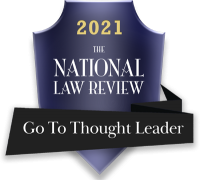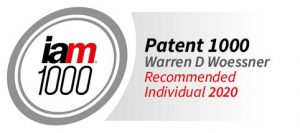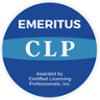In my post of April 22, 2009, I spent quite a lot of time discussing why “mechanism of action” claims may issue but, like the “Hail Mary” pass in football, remain vulnerable to invalidation as inherently anticipated by the prior art, taken with discoveries made long after the filing date of the claims. Much of this discussion was in the context of the reexamination of the NF-kB patent claims asserted by Ariad against Lilly. I posited that the PTO had effectively taken the position, with respect to such claims, that:
(A) Method claims whose only recited steps are altering biological mechanisms of action are invalid as anticipated, under principles of inherency, by a prior use of a biologically active compound that meets two requirements:
1. More than a year prior to the effective filing date of the claim at issue, an “old compound” was administered, so as to treat a condition or achieve a result encompassed by the condition or result recited by the claim at issue; and
2. At any time, it is shown that the mechanism of action of the “old compound,” when used to treat the condition or achieve the result, is the mechanism of action recited in the claim.
In the Ariad reexamination, at one point, the PTO Examiner cited the Old Testament of the Bible against the claims, in combination with a recent publication that demonstrated that reservatrol, a compound present in red wine, inhibited the NF-kB pathway. Thus, Bible stories in which red wine was consumed inherently anticipated claims to a method of inhibiting NF-kB activity in a cell by contacting the cell with an NF-kB inhibitor (some of the claims at issue in the patent asserted by Ariad were even broader than this).
This principle was applied by the Board on February 12, 2010, again in Lilly’s favor, to invalidate claim 24 of Pfizer’s Viagra patent (U.S. Pat. No. 6469012):
Claim 24. A method of treating erectile dysfunction in a male human, comprising orally administering … an effective amount of a selective cGMP PDEv inhibitor, or a pharmaceutically acceptable salt thereof, or a pharmaceutical composition containing either entity. (Ex parte Pfizer, Appeal No. 2009-004106, Bd. App. Feb. 12, 2010).
Pfizer had sued Lilly for infringing claim 24 by selling Cialis, admittedly a PDEv inhibitor. Lilly requested reexamination and urged that claim 24 was invalid as inherently anticipated by a (I assume “ancient”- as it is described in Chinese Herbal Medicine Materia Medica) treatment for impotence involving inter alia, drinking rice wine and imbibing an herb whose Latin name translates as “horny goat weed,” in combination with later evidence that demonstrated that the herb in fact contained icariin, a selective cGMP PDEv inhibitor, that would be effective to treat ED when administered in regimens disclosed in the Chinese literature. The Board found the evidence convincing, and affirmed the Examiner’s invalidation of the claim.
So the next time a professor-client or tech transfer person wants you to write this sort of claim, based on a newly discovered mechanism of action, remember that, like the Hail Mary pass, you can put it up there, but it might not stay up for long.
You can read more about it at Law36o.






